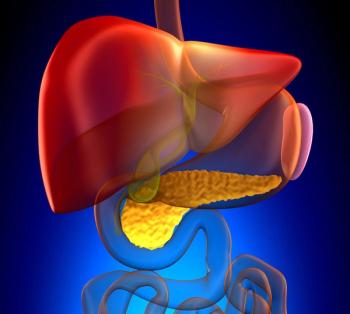
Study Finds Permanent Hair Dye Use Not Correlated with Cancer Risk
However, researchers did identify a positive correlation for the risk of some cancers in this prospective cohort study.
No positive correlation was identified between personal use of permanent hair dye and risk of most cancers and cancer-related mortality, according to a study published in The BMJ.1
However, researchers did find a positive association for the risk of basal cell carcinoma, hormone receptor-negative breast cancer, and ovarian cancer. In addition, the study also found evidence for heterogeneity due to natural hair color, with an increased risk of Hodgkin’s lymphoma being observed only in women with naturally dark hair, and a higher risk of basal cell carcinoma being observed especially in women with naturally light hair.
“The present prospective cohort study offers some reassurance against concerns that personal use of permanent hair dyes may be associated with an increased risk of cancer or mortality,” corresponding author Eva S. Schernhammer, MD, MPH, MSc, DrPH, adjunct professor of Epidemiology in the Department of Epidemiology at Harvard T.H. Chan School of Public Health, said in a press release.2 “Nevertheless, we also found a positive correlation for the risk of some cancers.”
In this prospective cohort study, researchers evaluated 117,200 women enrolled in an ongoing prospective cohort study of female nurses in the US titled the Nurses’ Health Study. The women were free of cancer at baseline, reported information on personal use of permanent hair dyes, and were followed for 36 years.
Overall, ever users of permanent hair dyes saw no significant increases in risk of solid cancers (n = 20,805, excluding non-melanoma skin cancers; HR, 0.98; 95% CI, 0.96-1.01) or hematopoietic cancers overall (n = 1807; HR, 1.00; 95% CI, 0.91-1.10) compared with non-users. Moreover, ever users did not have an increased risk of most specific cancers, including cutaneous squamous cell carcinoma, bladder cancer, melanoma, estrogen receptor positive breast cancer, progesterone receptor positive breast cancer, hormone receptor positive breast cancer, brain cancer, colorectal cancer, kidney cancer, lung cancer, and most of the major subclasses and histological subtypes of hematopoietic cancer, or cancer related death (n = 4860; HR, 0.96; 95% CI, 0.91-1.02).
However, basal cell carcinoma risk was found to be slightly increased for ever users (n = 22560; HR, 1.05; 95% CI, 1.02-1.08).
“Our findings update the first prospective cohort study of hematopoietic cancer among women who use permanent hair dye conducted in 1994 with participants from the Nurses’ Health Study,” the authors noted. “With considerably longer follow-up, our findings generally replicate the previous report of no material increase in the risk of overall or major subcategories of hematopoietic cancer, although we note that the previous study preceded the modern WHO classification of hematological cancers (therefore subgroup specific findings might not be directly comparable).”
Further, cumulative dose was positively associated with risk of estrogen receptor negative breast cancer, progesterone receptor negative breast cancer, hormone receptor negative breast cancer, and ovarian cancer. An increased risk of Hodgkin lymphoma was also observed only for women with naturally dark hair (based on 70 women, 24 with dark hair), and a higher risk of basal cell carcinoma was observed for women with naturally light hair.
“The observation of higher Hodgkin lymphoma risk among women who were presumed to use dark colored permanent hair dye is novel and warrants cautious interpretation,” the authors explained. “This finding is based on a limited number of women and we had insufficient histological subtype information to restrict the analysis to classic Hodgkin lymphoma types, which might have a different cause from non-classical types. Additionally, we cannot rule out an influence of residual or otherwise uncontrolled confounding, for example, by factors for which we lacked information (such as history of oncogenic infections).”
Importantly, the researchers indicated that until the overall study findings can be confirmed in other large populations, they also require cautious interpretation. Ultimately, more research is still needed to identify the specific chemical constituents that might be contributing to the increased risks observed in this study.
“Our results justify further prospective validation,” said Schernhammer. “This depends on different populations and countries, different susceptibility genotypes (e.g. NAT1 or NAT2), cancers if different genotypes and molecular genetic phenotypes, different exposure settings (personal use vs. occupational exposure), different time points and different colours of the permanent hair dyes used (dark dyed vs. light dyed), with refined exposure estimates and should be interpreted in the light of the totality of the evidence.”
References:
1. Zhang Y, Birmann BM, Han J, et al. Personal use of permanent hair dyes and cancer risk and mortality in US women: prospective cohort study. The BMJ. doi: 10.1136/bmj.m2942
2.Hair dye and cancer risk: largest study yet [news release]. Vienna. Published September 3, 2020. Accessed September 3, 2020.
Newsletter
Stay up to date on recent advances in the multidisciplinary approach to cancer.















































































